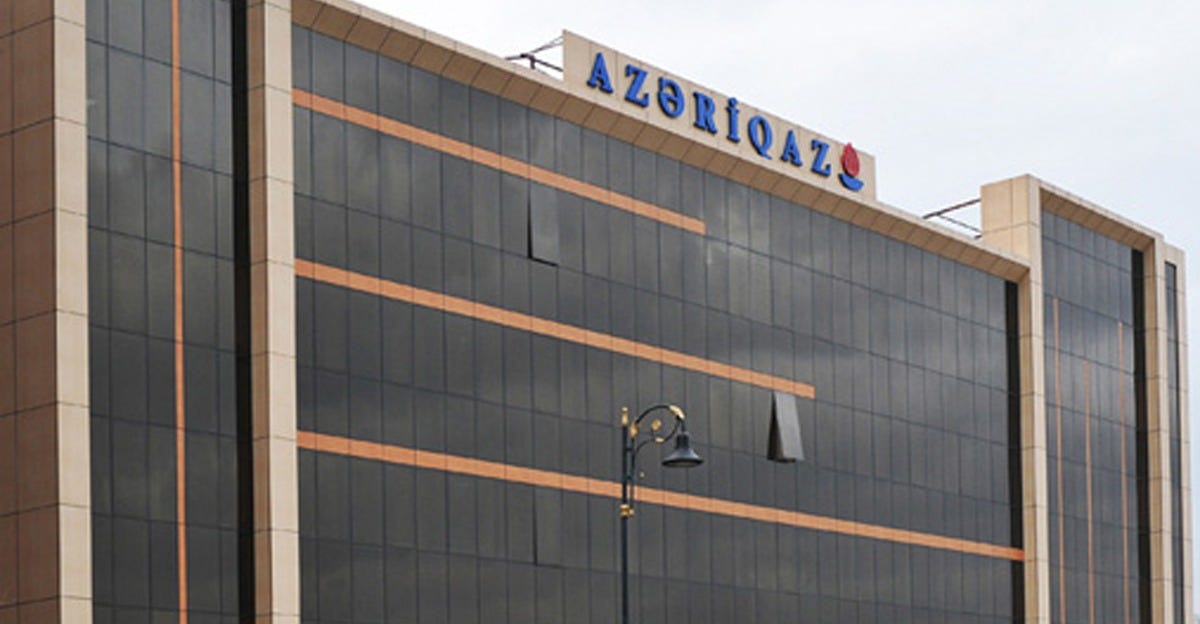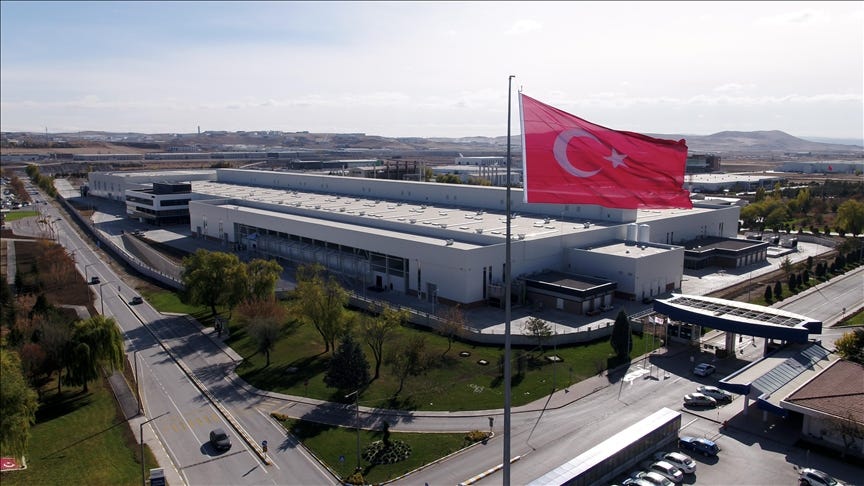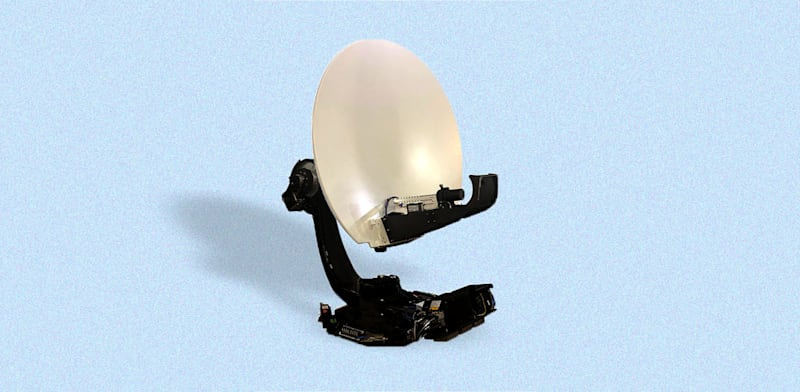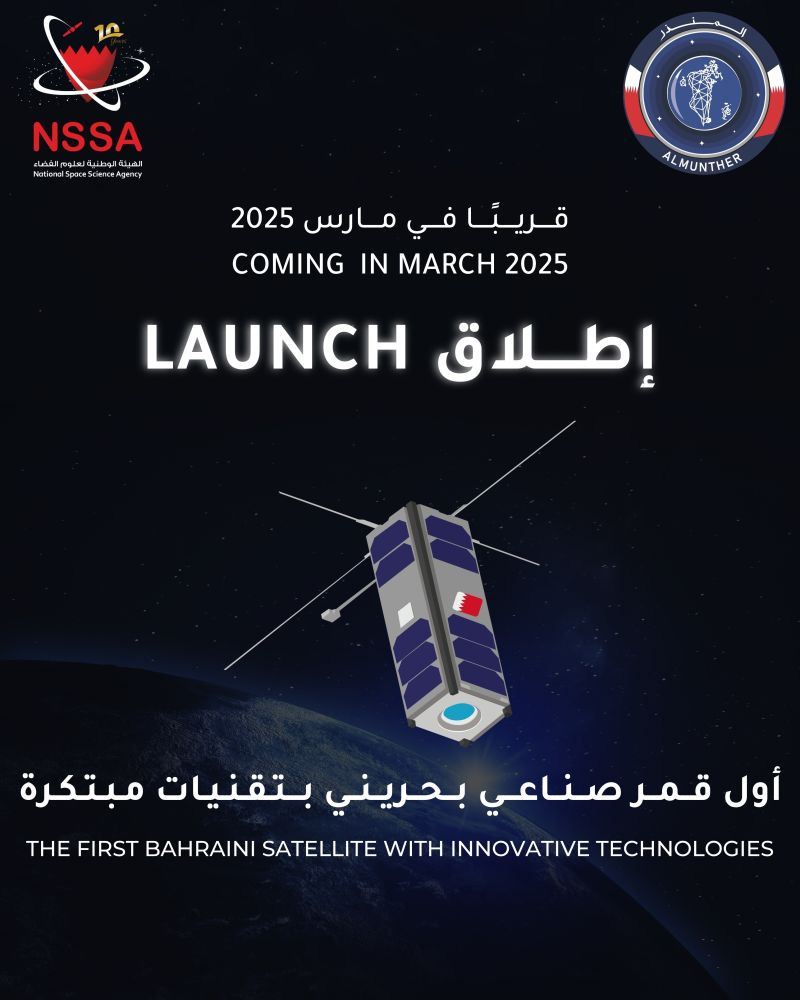Middle East Space Roundup: 3 to 9 March 2025
A summary of all the space news in the Greater Middle East over the past week, brought to you by AzurX

The following are the major space developments in the Greater Middle East region tracked by Middle East Space Monitor over the past week:
Azerbaijan Space Developments
Azerbaijan’s Azercosmos Provides Satellite Training to Hungary’s 4iG Space & Defence Technologies
Azercosmos, Azerbaijan’s state space corporation, conducted a Satellite Control & Ground Systems training workshop in Budapest, Hungary, from 3 to 6 March 2025, in collaboration with 4iG Space & Defence Technologies. The program provided engineers and executives from Hungaro DigiTel and Remred with critical expertise in satellite operations, reinforcing Azercosmos’ commitment to international knowledge-sharing in the space sector. As part of its broader Training and Consultancy program, Azercosmos offers specialized courses in Spectrum Management, GIS & Remote Sensing, Strategy Consulting, and Satellite Communications. This initiative highlights Azerbaijan’s growing role in fostering global partnerships and capacity-building in satellite technology and space operations.
Azerbaijan and Uzbekistan to Cooperate on Earth Observation Data
Azercosmos and Uzbekcosmos are advancing a joint project leveraging Earth observation data to assess soil salinization, reinforcing environmental monitoring and sustainable land use in Azerbaijan and Uzbekistan. This initiative, part of a broader partnership formalized in 2022, reflects Uzbekistan’s expanding role in the global space sector. Uzbekcosmos actively collaborates with international agencies, including those in Türkiye, France, the U.S., and Japan, while representing Uzbekistan in key space organizations such as the Committee on the Peaceful Uses of Outer Space (COPUOS) and the Organization of Turkic States (OTS). The agency is preparing to launch a satellite in 2026 as part of an OTS initiative, underscoring its growing capabilities in satellite development. Uzbekcosmos’ strategic focus on Earth observation technologies has yielded significant results, including real-time monitoring for agriculture, water management, and environmental protection, with over 100,000 state regulation violations detected in 2024. Future projects include satellite-assisted assessments of water use efficiency in agriculture and UAV-based resource monitoring. Uzbekistan also plans to bid for hosting the International Astronautical Congress in 2028, while educational initiatives in 2025 aim to foster local expertise in space technologies. Looking ahead, the agency’s National Space Program until 2035 envisions expanding Uzbekistan’s space infrastructure, developing human capital, and participating in lunar and Martian exploration programs.
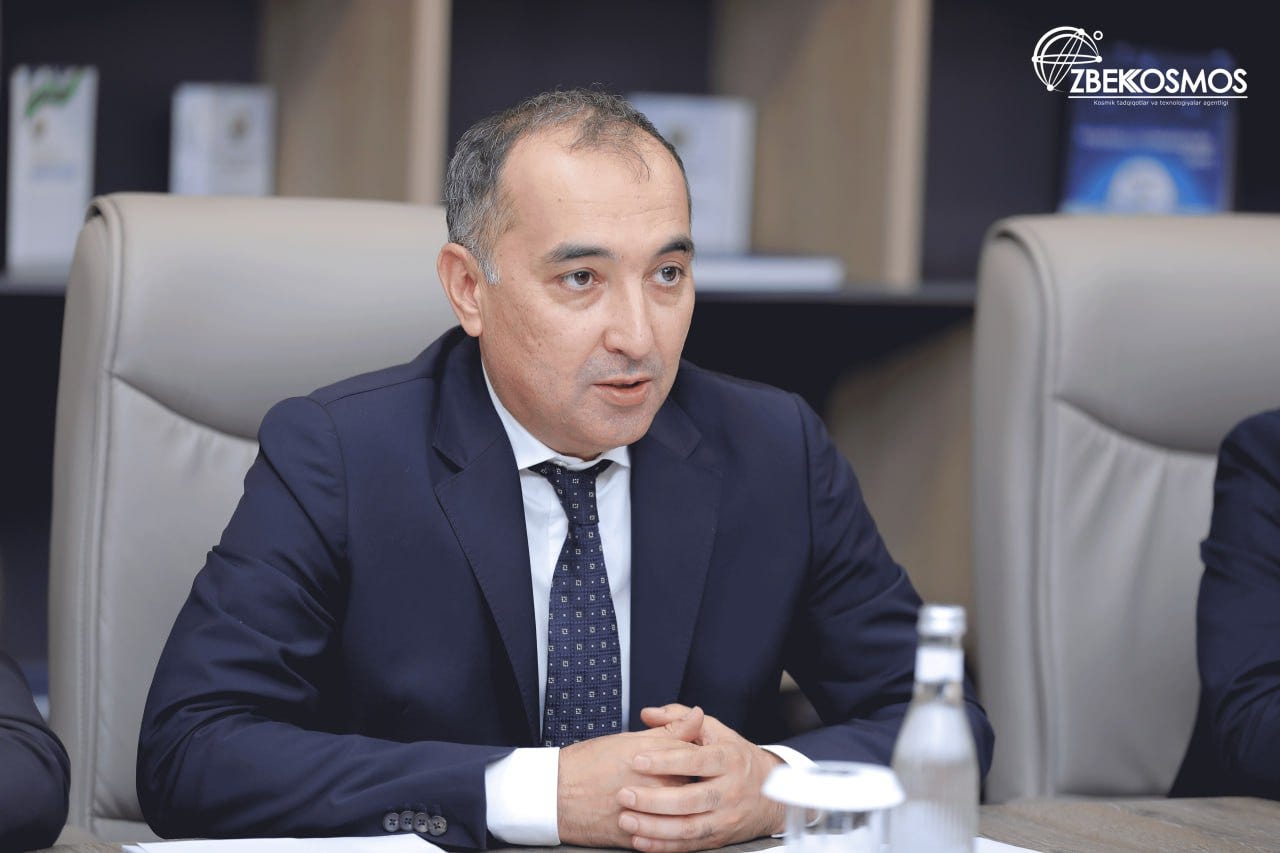
Changes in Leadership at Azerbaijan’s Azercosmos
Dunay Bedirkhanov has been appointed as the acting chairman of Azerbaijan’s Azercosmos state space corporation, following his tenure as deputy chairman. This leadership transition comes as former chairman Samaddin Asadov assumes the role of Deputy Minister of Digital Development & Transport. The move signals a strategic alignment between Azerbaijan’s space initiatives and its broader digital transformation agenda, reinforcing the government's commitment to expanding its presence in the global space sector.
Azerbaijan to Expand Space Programs in Coming Years
Azerbaijan is set to expand its space programs in the coming years, further solidifying its position in the global space industry, according to Deputy Minister of Digital Development and Transport Samaddin Asadov. Speaking at an event for World Engineering Day, Asadov highlighted Azerbaijan’s growing influence in space, transitioning from a regional player to an active global participant. The country is involved in multiple international space projects and aims to develop and launch next-generation satellites that meet the highest technological standards. This strategic focus reflects Azerbaijan’s commitment to enhancing its space capabilities and securing a stronger role in the international space sector.
Opinion: Space Cooperation at the Heart of Evolving U.S., Israel, and Azerbaijan Alliance
In News.Az International, Israeli commentator Moses Becker writes that a proposed U.S.-Israel-Azerbaijan alliance is gaining traction, with significant implications for regional security, economic cooperation, and space collaboration. Beyond energy and defense ties, the deepening partnership between Azerbaijan and Israel includes a long-term agreement between Azercosmos and Israel’s Spacecom to jointly operate communications satellites, extending their coverage across the Middle East, Europe, North America, and Africa. This enhances Azerbaijan’s satellite capabilities while providing Israel with a strategic partner in the Caucasus. The growing space collaboration underscores Azerbaijan’s increasing role in global satellite operations and aligns with its broader technological ambitions. As geopolitical dynamics shift, integrating Azerbaijan into a U.S.-Israel framework could provide strategic advantages, including countering Iranian influence, securing vital energy corridors, and expanding satellite and defense cooperation. This evolving partnership signals a recalibration of regional alliances, with space and satellite technology playing a central role in shaping the strategic landscape.
Azerbaijan’s Azerigas PU to Use Satellite Monitoring Capabilities in its Operations
Azerigas Production Union is leveraging satellite technology to enhance energy efficiency and detect losses within its aging gas distribution network, a key focus of its medium-term strategy. Speaking at a public discussion on energy efficiency, General Director Azer Mammadov emphasized the need for modernization, given that the network was established 65 years ago. The company aims to integrate advanced satellite monitoring systems to identify and mitigate losses, while also prioritizing digitization and data management improvements. These efforts align with broader national energy efficiency goals, ensuring a more resilient and sustainable infrastructure.
Türkiye Space News
Türkiye’s TAI and DeltaV Partner to Develop High-Resolution Earth Observation Microsatellite Constellation
Turkish Aerospace Industries (TAI) has signed a strategic cooperation agreement with Turkish rocket manufacturer DeltaV to develop a high-resolution Earth observation microsatellite system, advancing Türkiye’s space capabilities. The project integrates an electro-optical payload with a homegrown propulsion system from DeltaV, reinforcing Türkiye’s commitment to indigenous space technology. The satellite’s ground and flight software, power units, and flight computers are being developed domestically, ensuring national control over critical satellite infrastructure. Designed for defense, environmental monitoring, disaster management, and urban planning, the system will deploy satellites with 0.9m and 0.5m resolution, forming an orbital satellite network. The preliminary design phase has been completed, with the critical design phase now progressing rapidly. Mission command and control will be managed from the Akinci Ground Station at TAI’s facilities, positioning Türkiye as a key player in the microsatellite sector.
Türkiye in Ongoing Talks With Starlink, Licensing Contingent on Addressing National Security Concerns
Türkiye is in ongoing discussions with SpaceX’s Starlink regarding potential licensing, with the government emphasizing national security as a key consideration. Speaking at the GSMA Mobile World Congress, Transport and Infrastructure Minister Abdulkadir Uraloglu stated that while low-Earth orbit satellites play a crucial role in modern communications, Türkiye will only authorize Starlink once security concerns are fully addressed. The government remains committed to prioritizing domestic production in communication technologies while selectively integrating international solutions. Starlink’s potential entry into the Turkish market could enhance connectivity in rural and disaster-prone areas, addressing past network failures during earthquakes. However, regulatory approval hinges on further national security assessments and technical evaluations, with no timeline currently set for a final decision.
Türkiye’s Turksat Partners With ULAK Communications for Intelligent Transportation Systems
At MWC 2025 Barcelona, Türkiye advanced its national communication infrastructure through a strategic partnership between ULAK Communication Inc. and TÜRKSAT. The agreement, signed with the participation of Minister of Transport and Infrastructure Abdulkadir Uraloğlu, establishes a 5G private network for Cooperative and Intelligent Transportation Systems (K-AUS) along a key 19-kilometer corridor in Istanbul. This network will enhance vehicle-to-vehicle (V2V), vehicle-to-infrastructure (V2I), and vehicle-to-network (V2N) communication, leveraging locally developed base stations and core network solutions. By integrating 5G technology into transportation, the project aims to improve traffic efficiency, reduce accidents, and support environmental sustainability. TÜRKSAT and ULAK’s collaboration underscores Türkiye’s commitment to digital transformation, positioning the country as a leader in smart transportation infrastructure while enhancing global competitiveness in mobile and communication technologies.

Turkish Medical Researcher Leads Way in Understanding Space Medicine for Women
Dr. Begum Aydogan Mathyk, an obstetrics and gynecology researcher at the University of South Florida, is pioneering women's health research in space and has proposed a study for the all-women Virgin Galactic spaceflight planned for 2026. With experience in NASA's Space Medicine Operations and research programs, Mathyk is at the forefront of understanding how space travel affects female astronauts' reproductive health and hormonal systems—an area with limited existing studies. Her groundbreaking work on gynecological ultrasound in microgravity aims to enable independent health assessments during long-duration space missions, crucial for future lunar and Martian settlements. Published in the Nature scientific journal, her research on estrogen's role in space contributes to the global understanding of spaceflight’s biological effects. Mathyk advocates for greater Turkish involvement in multidisciplinary space research, highlighting Türkiye’s aerospace heritage and urging scientists across fields to contribute. If selected, her participation in the 2026 mission will mark a significant step in advancing space medicine and ensuring long-term health solutions for female astronauts.
Algeria Space Developments
Algeria Invests in Military Modernization and Satellite Technology to Counter Morocco
Algeria is intensifying its military and space technology investments, positioning itself as Africa’s top arms importer and a growing player in satellite development, according to a new report by Pierre Boussel for Geopolitical Intelligence Services (GIS). With a $25 billion defense budget for 2025, the country is leveraging increased oil and gas revenues to modernize its military capabilities, including potential acquisitions of Su-57 fighter jets from Russia and advanced radar systems from China. This arms buildup, while outwardly framed as a response to Morocco, is also a domestic strategy to reinforce government control following the Hirak protests and sustain the military’s central role in national stability. Beyond conventional defense, Algeria is prioritizing high-tech sectors, particularly satellite development, as part of its long-term strategy for strategic independence. By the late 2030s, it aims to enhance its satellite network for both civilian and military applications, aligning with its broader vision of technological self-reliance. Algiers’ foreign policy is shaped by partnerships with Russia and China, with Moscow remaining its primary arms supplier and Beijing supporting limited domestic defense production. Despite this, Algeria also maintains a degree of diplomatic flexibility, as evidenced by its military cooperation memorandum with the U.S. While the country’s military expansion supports its narrative of regional power, its true challenge lies in addressing domestic economic pressures, as public discontent grows over unemployment and basic service shortages. Meanwhile, the ongoing Algerian-Moroccan arms race, coupled with Algeria’s investment in satellite surveillance, underscores the broader geopolitical competition shaping North Africa’s strategic landscape.
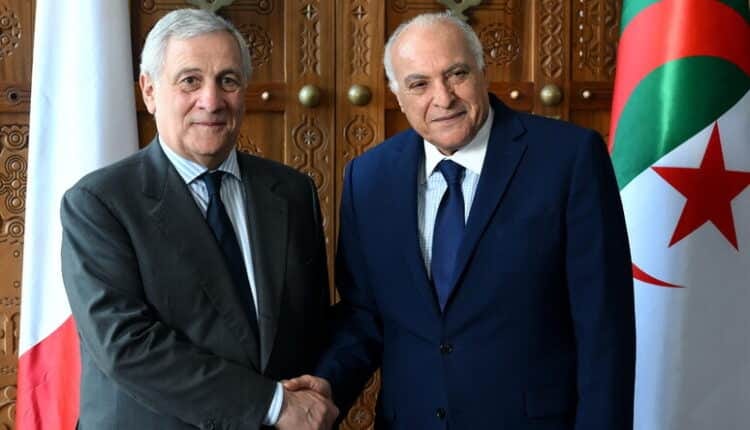
Algeria and Italy Deepen Space Cooperation in High-Level Talks
Italian Foreign Minister Antonio Tajani’s official visit to Algeria aims to strengthen strategic cooperation across energy, infrastructure, transport, security, and space, reinforcing Algeria’s role as a key partner in Italy’s energy security strategy. The visit includes high-level meetings with Algerian officials and an Italy-Algeria business roundtable, featuring key industry players from both countries. Energy cooperation remains central, with Algeria now Italy’s primary supplier of natural gas, covering 39% of imports, following the Eni-Sonatrach agreement. Discussions also focus on expanding renewable energy collaboration, particularly through the Southern Hydrogen Corridor and infrastructure interconnections. Beyond energy, Italy and Algeria align on regional stability efforts in Libya and the Sahel and share a vision for Africa’s development, underscored by Algeria’s participation in Italy’s Mattei Plan. The space sector is also highlighted as an area for deeper economic collaboration, reflecting the broader ambition to enhance bilateral technological and industrial partnerships.
UAE Space News
Orbital Alliances - Harmonizing Commercial Space Regulation: A Discussion on the Future of Global Space Policies
On March 12, space industry leaders will gather in Washington for an engaging discussion and networking reception on the sidelines of SATELLITE 2025. The convening will focus on the importance of harmonizing commercial space regulations across international frameworks, addressing how these efforts can streamline operations, promote efficiency, and foster innovation within the commercial space sector. Key stakeholders from around the world, including Karim Sabbagh, Managing Director of Space42, will be part of the panel, exploring the benefits of a more interconnected regulatory environment. A partnership between Meridian International Center, the Embassy of Argentina, and the Embassy of the United Arab Emirates, this program will explore how aligning commercial space regulations and fostering international collaboration can unlock greater opportunities for the global space economy.
UAE Satellite Communication Entities Victim of Iranian Cyber Espionage Campaign
A newly discovered cyber-espionage campaign has targeted critical sectors in the UAE, including aviation, satellite communications, and transportation infrastructure, with a custom backdoor malware called Sosano. The campaign, attributed to a threat group dubbed UNK_CraftyCamel, used a compromised email account from Indian electronics company INDIC Electronics to send targeted phishing messages. According to cybersecurity firm Proofpoint, the attackers are likely Iranian-aligned, possibly affiliated with Iran’s Islamic Revolutionary Guard Corps (IRGC). The operation demonstrates sophisticated supply chain compromise tactics, exploiting trusted business relationships to distribute malware while evading detection. Sosano enables attackers to download and execute additional payloads, enhancing their intelligence-gathering capabilities. This incident aligns with previous Iranian-linked cyber activities targeting the aerospace and defense industries in the Middle East, underscoring ongoing geopolitical cyber threats in the region.

UAE’s NYU Abu Dhabi Unveils Planetary Simulation Chamber for Space Science and Exploration Missions
New York University Abu Dhabi (NYUAD) has unveiled a cutting-edge planetary simulation chamber, a first-of-its-kind facility in the UAE that enables researchers to recreate extreme planetary environments, advancing the country’s space research capabilities. The chamber allows scientists to simulate the surface conditions of the Moon, Mars, and asteroids by adjusting gas composition, pressure, and temperature, complementing data gathered by UAE spacecraft. Led by astrophysicist Dr. Dimitra Atri, the project supports various UAE-led missions, including the Hope probe, the Emirates Lunar Mission, and the upcoming asteroid belt exploration mission. The chamber is equipped to create simulated regolith and features an optical system for replicating solar radiation effects, providing critical insights into planetary surface processes. It also has vacuum capabilities, allowing space hardware testing domestically instead of relying on U.S. facilities like NASA’s Jet Propulsion Laboratory. This initiative strengthens the UAE’s space research infrastructure, supports local talent development, and enhances the country's role in planetary science and interplanetary exploration.
UAE’s Thuraya, a Space42 Subsidiary, Release Thuraya One D2D SATCOM Smartphone
Thuraya, the satellite mobility arm of the UAE’s Space42, has launched Thuraya One, an Android 14 smartphone with integrated satellite capabilities, at Mobile World Congress 2025. Leveraging 5G, 4G, and Thuraya’s satellite network—including the newly launched Thuraya-4 satellite—the device ensures seamless connectivity beyond terrestrial networks. Designed for dual-mode operation, Thuraya One allows users to switch between cellular and satellite communications, eliminating the need for dedicated satellite equipment in remote areas. The smartphone supports mobile operator SIM cards from over 370 Thuraya roaming partners, enhancing its global usability. Built with rugged durability (IP67-rated for dust and water resistance), a Qualcomm Octa-core Kryo processor, and advanced camera technology, Thuraya One offers up to 26 hours of talk time in 5G mode, making it ideal for field operations and emergency use. Ali Al Hashemi, CEO of Yahsat Space Services, Space42, highlighted the launch as a significant step in executing their Direct-to-Device strategy, reinforcing their position as a Non-Terrestrial Networks (NTN) operator. The smartphone is now available through Thuraya’s 140+ global service partners, catering to industries requiring secure, reliable satellite connectivity, including aerospace, maritime, defense, and remote enterprise operations.
Israel Space Developments
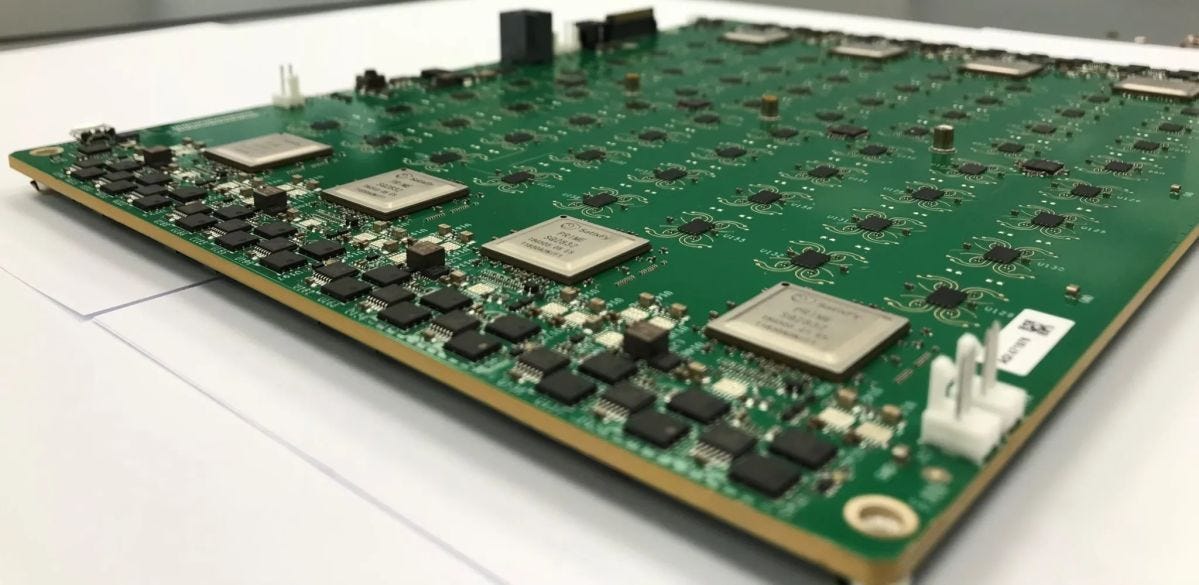
Israel’s SatixFy Receives $2.3 Million Order for Satellite Chips From UK Space Agency
The UK Space Agency has awarded £1.8 million ($2.3 million) to Israel’s satellite chipmaker SatixFy to accelerate the development of digital beamforming software, enhancing the adaptability of reprogrammable satellite payloads. Over the next two years, SatixFy will refine its software to reduce the time required for satellite reconfiguration from several minutes to near-instantaneous adaptation. By introducing an abstraction layer, the software virtualizes the payload, enabling real-time adjustments to market conditions and traffic demands without reprogramming hardware. Additionally, integrating artificial intelligence will allow satellites to autonomously modify operations based on user demand, reducing reliance on ground teams. This initiative aligns with the growing industry shift toward software-defined payloads, providing operators with greater flexibility to optimize satellite capacity dynamically in response to evolving market needs.
Israel Could Collaborate With U.S. on Space-Based Golden Dome for America
The United States is exploring an advanced missile defense initiative, initially branded as the Iron Dome for America and later renamed Golden Dome for America. Inspired by Israel’s successful Iron Dome system, the project aims to develop a multi-layered defense architecture capable of countering ballistic, hypersonic, and cruise missile threats. While Israel’s Iron Dome has proven highly effective in intercepting short-range rockets, the U.S. initiative will require more advanced capabilities, incorporating space-based radar, satellite-enabled tracking, and high-altitude interceptors such as Arrow-3 and David’s Sling—systems developed through U.S.-Israel cooperation. The program aligns with the strategic objectives of U.S. Space Force, leveraging satellite networks like Starshield for missile detection and secure communications. Defense contractors including Raytheon, Lockheed Martin, and SpaceX are expected to compete for key contracts. Given Israel’s extensive experience in missile defense, potential collaboration between the two countries could accelerate the deployment of a robust, space-integrated missile shield.
Israel’s Gilat Secures $6 Million Contract From Asia-Pacific Military for SATCOM Solution
Israel’s Gilat Satellite Networks has secured a $6 million contract to supply its SkyEdge II-c satellite communications platform to a military organization in the Asia-Pacific region. The system will support both fixed and mobile defense operations, ensuring secure and resilient connectivity with enhanced cyber security measures. This contract highlights Gilat’s expanding footprint in the global defense sector and the confidence in its field-proven SATCOM solutions for mission-critical applications. With delivery expected within three months, the deal reinforces Gilat’s role as a key provider of advanced satellite technology for military forces operating in complex and high-demand environments.
Israel’s Orbit Secures $2.2 Million Contract from a European Navy for SATCOM Terminals
Israel’s Orbit Communication Systems, a company controlled by FIMI Opportunity Funds, has secured a $2.2 million contract to supply its OceanTRx4 Mil satellite communications system to a European integrator for deployment on a naval military platform, with deliveries set to begin next year. Specializing in SATCOM terminals for ground, airborne, and maritime applications, Orbit serves over 27 naval fleets and defense industry leaders, including Lockheed Martin, Leonardo, and Northrop Grumman. The newly launched OceanTRx4 Mil platform is designed to enhance global naval operations, supporting multiple configurations with a 1.15-meter antenna operating across Ku, X, and Ka frequency bands, and offering a unique multi-frequency capability for seamless communication. This contract reinforces Orbit's position as a key provider of advanced satellite communications solutions for military and defense applications.
Executive from Israel’s Gilat Appointed Chair of WAVE Board
Dubi Lever, the Chief Technology Officer of Israel’s Gilat Satellite Networks, has been appointed as the new Chair of the Waveform Architecture for Virtualized Ecosystems (WAVE) Board, a consortium dedicated to advancing open, interoperable, and virtualized satellite communications (SATCOM) networks. Under the IEEE-ISTO framework, WAVE brings together industry leaders, government agencies, and research institutions to establish standardized architectures for waveform virtualization, enabling SATCOM networks to leverage commodity hardware and software-driven solutions. Lever’s leadership aims to accelerate cross-industry collaboration, enhance technology adoption, and drive innovation in both commercial and defense markets. A key focus of WAVE’s mission is the development of a hardware abstraction layer, which will enable multiple waveforms to be deployed seamlessly on common hardware, improving flexibility, cost-efficiency, and operational readiness. This initiative aligns with Gilat’s long-standing vision of open standards and reprogrammable solutions, reinforcing the strategic importance of virtualized SATCOM in future space and defense applications.
Researchers Argue for Israeli Space-Based Missile Defense System
Writing for Tel Aviv University’s Institute for National Security Studies (INSS), researchers Yehoshua Kalisky and Iky Hazan argue Israel's advanced missile defense architecture is evolving to counter increasingly sophisticated threats from Iran and its regional proxies. With growing reliance on rocket and missile attacks, including those with precision-guidance capabilities, Israel continues to develop multi-layered interception solutions. Space-based technologies, particularly satellite early-warning systems and real-time surveillance, play a critical role in detecting launches and tracking missile trajectories. Israel's defense network—comprising the Iron Dome, David’s Sling, and the Arrow missile series—aims to neutralize threats at various stages, but the future of missile defense may include boost-phase interception (BPI). BPI, which involves targeting a missile shortly after launch, remains a technological challenge, requiring high-speed detection, rapid-response interceptors, and advanced sensor networks. While airborne and space-based systems could enhance Israel’s interception capabilities, limitations in geography, strategic depth, and cost necessitate innovative solutions. Laser-based directed energy weapons and satellite-enabled kinetic interceptors may eventually complement existing defenses. Israel’s ongoing investment in missile defense highlights the increasing role of space technologies in maintaining regional security, mitigating collateral damage, and countering long-range missile threats before they become unmanageable.
Saudi Arabia Space News
Saudi Arabia in Talks With France’s ArianeGroup on Military Space Capabilities
Saudi Arabia’s Ministry of Defense (MoD) is engaged in advanced negotiations with France’s ArianeGroup to bolster the Kingdom’s space defense capabilities, with discussions ongoing for the past nine months, according to Tactical Report. The partnership is expected to focus on enhancing satellite resilience, propulsion systems, and maneuverability to counter potential threats. A key priority is the development of hardened satellite networks with enhanced encryption and redundant communication links to prevent signal degradation and unauthorized access. The initiative is set to integrate with both the Royal Saudi Air Defense Force (RSADF) and the Saudi Space Agency, aligning with the Kingdom’s broader ballistic missile defense strategy. Talks also include incorporating satellite-based early warning systems (EWS) into Saudi Arabia’s missile defense framework, potentially requiring collaboration with a third party. Additionally, counterspace strategies such as electromagnetic shielding and frequency-hopping communications are under consideration to protect Saudi assets from adversarial threats. While no official timeline has been set, discussions are expected to continue through 2025, reflecting Saudi Arabia’s commitment to advancing its military space infrastructure as part of its broader defense modernization strategy.

Saudi Arabia’s Neo Space Group and China’s SuperMap Partner on GIS Solutions
Saudi Arabia’s geospatial sector is set for significant advancement as Neo Space Group (NSG), a satellite and space firm under the Kingdom’s sovereign wealth fund, partners with China’s SuperMap Software to enhance geographic information system (GIS) capabilities. The collaboration aligns with Saudi Arabia’s Vision 2030 goals, aiming to expand commercial space operations and develop innovative satellite solutions. The partnership, formalized in Riyadh, underscores NSG’s commitment to diversifying investments and localizing expertise in the geospatial sector. SuperMap, a global GIS leader, has reinforced its regional presence by establishing an office in Saudi Arabia, supporting digital transformation efforts. Together, NSG and SuperMap will drive advancements in geospatial technology for applications in urban planning, environmental management, and infrastructure development, strengthening Saudi Arabia’s role as a hub for space and GIS innovation in the Middle East.
Bahrain Space Developments
Bahrain’s Indigenously-Built Al Munther Satellite to be Launched on 12 March 2025
Bahrain is set to launch its first fully domestically developed satellite, Al Munther, in March 2025, marking a significant milestone in the Kingdom’s space capabilities. Equipped with a medium-resolution camera, Al Munther will leverage AI algorithms to analyze images and data related to weather patterns, environmental monitoring, and maritime conditions, including air quality and oil spills. This initiative builds on the success of Bahrain’s first satellite, Light-1, launched in 2022, and aims to strengthen national expertise in satellite design, construction, testing, and operations. The Al Munther satellite, also known as the Made in Bahrain satellite, is set to launch aboard SpaceX’s Falcon 9 as part of the Transporter-13 mission from Vandenberg Space Force Base, California. Positioned in a sun-synchronous orbit Al Munther will operate at 550 km altitude. This milestone reinforces Bahrain’s growing role in the space sector, strengthened by its collaboration with the Mohammed bin Rashid Space Centre (MBRSC) in the UAE. Beyond its technological significance, the mission serves as a catalyst for inspiring future Bahraini space talent, marking a pivotal step in the Kingdom’s expanding space ambitions.
Bahrain, UAE Hold Joint Space Event Featuring Emirati Astronauts
As Bahrain prepares for the launch of its Al Munther satellite in March 2025, the National Space Science Agency (NSSA), in collaboration with the Mohammed bin Rashid Space Centre (MBRSC) in the UAE, hosted a virtual session featuring Emirati astronauts Mohammed Al Mulla and Nora Al Matrooshi. Engaging over 1,000 students from various educational institutions, the session explored the economic and sustainable benefits of space investment, the increasing role of small and nanosatellites, and the technological advancements shaping the sector. The discussion also highlighted Bahrain-UAE space cooperation, emphasizing innovation and regional collaboration. Al Munther, equipped with artificial intelligence for image and data analysis, represents a significant milestone in Bahrain’s space ambitions. NSSA CEO Dr. Mohamed Ibrahim Al Aseeri underscored that the initiative aligns with Bahrain’s strategic directives to promote space awareness and inspire youth to pursue careers in science and technology. This engagement reflects the region's commitment to fostering talent and strengthening its presence in the global space industry.
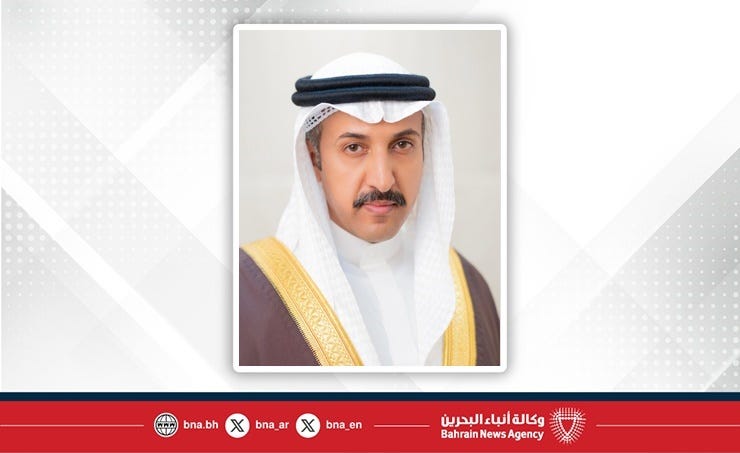
Bahrain Deploys New Satellite Image & Data Reception System for Improved Meteorology
Bahrain is strengthening its meteorological capabilities with the deployment of a third-generation satellite image and data reception system, making it the second Gulf country to implement this advanced technology. Minister of Transportation and Telecommunications Dr. Shaikh Abdulla bin Ahmed Al Khalifa emphasized that this initiative aligns with Bahrain’s Economic Vision 2030 and aims to enhance weather forecasting accuracy, aviation and maritime safety, and climate resilience. The new system, capable of capturing high-resolution images with 0.5 km accuracy and updating data every 15 minutes, enables real-time monitoring of severe weather events such as dust storms, cumulonimbus clouds, and dense fog. Khaled Hussain Yaseen, Director of the Meteorological Directorate, highlighted the system’s expanded coverage, incorporating satellite data from the Americas, Atlantic, Asia, and the Pacific, ensuring more comprehensive and precise climate monitoring. This advancement positions Bahrain as a regional leader in leveraging space-based technologies for disaster management, early warning systems, and overall public safety.
Other Regional Space News
Russia’s Aid to Iran on Space and Nuclear Technologies Raise Military Modernization Fears
The recent Iran-Russia strategic partnership agreement, spanning two decades, strengthens collaboration in nuclear and space technology, raising concerns over military applications according to Francesco Salesio Schiavi in a report for The Arab Gulf States Institute in Washington (AGSIW) think-tank. While framed as civilian cooperation, the treaty institutionalizes technological exchanges, with Russia supporting Iran’s nuclear energy expansion and satellite development. Iran’s space ambitions have accelerated with Russian assistance, including the 2022 launch of the Omar Khayyam Earth observation satellite and agreements for further joint projects. Tehran’s goal of establishing an independent satellite navigation system and developing the Chabahar spaceport underscores its push for technological autonomy, yet it remains reliant on Russian expertise. This deepening alliance has significant geopolitical implications, particularly for Gulf states, as Iran’s advancing missile and space capabilities could shift regional security dynamics. The potential for Iran to leverage this cooperation in pursuit of nuclear threshold status intensifies proliferation risks, prompting Saudi Arabia and the UAE to consider nuclear development. Meanwhile, Moscow’s support for both Iran and non-state actors like the Houthis further complicates regional stability, reinforcing Gulf states’ efforts to modernize defense systems and strengthen alliances with Western powers.
Morocco in Talks With SpaceX to License Starlink Satellite Internet Services
Morocco is in advanced discussions with Starlink, SpaceX’s satellite internet service, to deploy high-speed internet in the Western Sahara, potentially transforming digital connectivity in the region. The initiative, backed by Moroccan Prime Minister Aziz Akhannouch and the royal cabinet, is undergoing regulatory review by the National Telecommunications Regulatory Agency (ANRT) and the General Directorate of Information System Security (DGSSI) to assess technical and security aspects. Negotiations began in mid-2024 and gained momentum at the Qatar-Africa Business Forum in Marrakech. If approved, Starlink’s network of low-Earth orbit satellites—positioned at 550 km for lower latency—could significantly improve broadband access compared to traditional satellite services. This project aligns with Morocco’s broader infrastructure investments in its southern provinces, reinforcing the Kingdom’s digital transformation and development strategy.
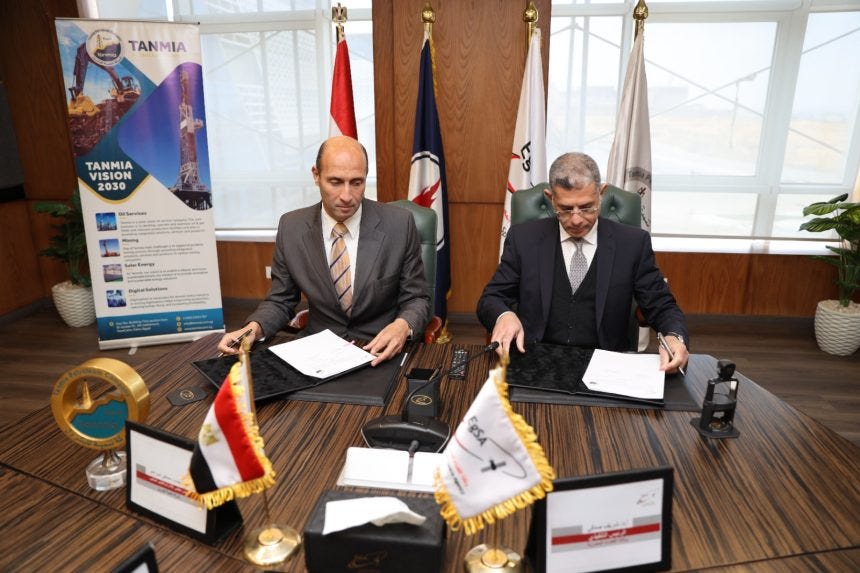
Egyptian Space Agency Partners With Egypt’s Tanmia Petroleum to Use Satellite Capabilities
The Egyptian Space Agency (EGSA) and Tanmia Petroleum Company have signed a Memorandum of Understanding (MoU) to enhance the monitoring and security of petroleum and mineral resources facilities using space technology. The collaboration aims to leverage EGSA’s expertise in satellite data analysis and remote sensing to develop advanced early warning systems for detecting leaks, preventing theft, and monitoring mining activities. This partnership aligns with Egypt’s broader strategy for digital transformation and technological innovation, ensuring greater safety, efficiency, and sustainability in the energy sector. By integrating space applications with the petroleum industry, the agreement reinforces Egypt’s commitment to utilizing cutting-edge solutions for economic development and infrastructure security.
Orange and Eutelsat Partner to Provide Hybrid 5G/SATCOM Services in Jordan, Africa
Orange Africa and Middle East (OMEA) and Eutelsat have entered a strategic partnership to expand broadband connectivity in Africa and the Middle East through the EUTELSAT KONNECT satellite. This multi-year collaboration aims to bridge the digital divide by providing high-speed internet access to remote and underserved areas, with initial deployment in Jordan, Côte d'Ivoire, Senegal, and the Democratic Republic of Congo before expanding further. By integrating satellite technology with Orange’s fixed and mobile networks, the partnership will deliver secure, high-performance connectivity for both individuals and businesses. Offering speeds of up to 100 Mbps, the initiative aligns with Orange’s long-term digital inclusion strategy and Eutelsat’s expertise in satellite solutions. The agreement also reinforces Orange’s role as a key provider of hybrid connectivity solutions while supporting national regulatory frameworks. This collaboration highlights the increasing role of satellite communications in complementing terrestrial networks to meet the growing demand for internet access across emerging markets.
Upcoming Event
University of Bonn to Host Spring School on Outer Space Cooperation in the Middle East, 4 to 6 April 2025
As space-based infrastructure becomes increasingly vital for navigation, weather forecasting, energy supply, and defense, the Middle East is emerging as a key player in the global space race. Countries such as the UAE, Saudi Arabia, Egypt, and Oman are making significant investments in space technologies, recognizing both the economic and strategic value of satellite capabilities. This growing reliance on space assets presents new security challenges but also fosters opportunities for regional cooperation, technological innovation, and international partnerships. Addressing these dynamics, the upcoming Spring School on Outer Space Cooperation in the Middle East—organized by multiple European and regional institutions, including CASSIS Bonn and the European Space Policy Institute (ESPI)—will explore how space collaboration can drive stability and development. The event, set to take place in Bonn, Germany, from 4 to 6 April 2025, will bring together researchers, students, and policymakers to discuss the intersection of space policy, security, and economic growth in the region.
Be sure to catch up with space activities in the region in the next edition of Middle East Space Monitor’s space roundup!




